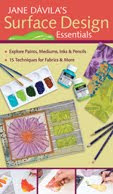B2B Monday - Keeping Track of Work
Good Monday evening! This week's tip to help your art career has to do with record-keeping and organizing.
You may have a system for keeping track of all of the bits of info that are important to your art - prices, shows, awards, etc - that works just great for you, but you may not have a system at all and now is a good time to set one up, add in all of your older work, and use it with new work moving forward.
Here are a few suggestions to get you started. Create a page in a word processing program for each artwork. Add a photo of it to the top of the page (this is a good way to make sure you remember to shoot all new work too!) Below the photo record the title, the dimensions, the price, and leave room for any exhibitions, sale date with name and contact info for the new owner, publications it may appear in, awards, statement, and any other relevant category that you might need.
 |
| A simple page created in Open Office or Word |
When you've finished creating the pages for each individual work, print them out and place them in a binder. You can sort the pages by series, by size, or any criteria that makes sense to you. When you are looking for work to enter into a show, flip open your binder and all of the info is right at your fingertips.
You could create a master list of all work for the front of the book, add columns to each page for exhibition submissions, ship dates, and return dates, etc. Keeping a book like this will take the pain out of submitting to shows, keeping track of prices, remembering to take photos and write statements, and locate work wherever it may currently be.
Do you have a system to record all of this info? What works for you?








